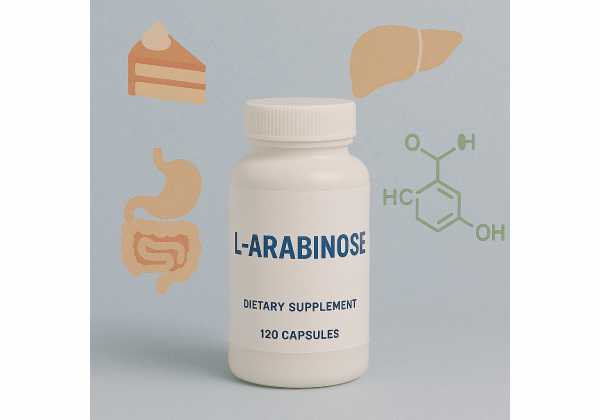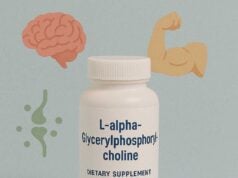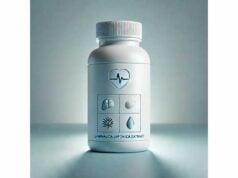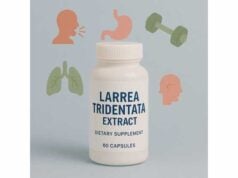
L-arabinose is a naturally occurring “rare sugar” found in plant fibers such as hemicellulose. As a supplement or functional ingredient, it’s prized for one practical reason: when taken with sucrose-containing foods, it can blunt the post-meal rise in blood glucose and insulin by inhibiting a key digestive enzyme (sucrase). Unlike non-nutritive sweeteners, L-arabinose still tastes mildly sweet and provides bulk, so it slots easily into baking, beverages, and mixed meals. Beyond glucose control, it may gently support appetite regulation and gut comfort by slowing sugar absorption and reducing rapid swings. Most data come from controlled meal studies—great for day-to-day guidance, but not a cure for diabetes. Safety is generally good at culinary doses, though large amounts can cause digestive upset and may interact with certain medications. This guide unpacks what L-arabinose is, how it works, how to use it in real meals, smart dosing ranges, who should avoid it, and the state of the evidence—so you can decide where it fits in your routine.
Quick Overview
- Lowers glucose and insulin spikes from sucrose by inhibiting intestinal sucrase during that meal.
- Works best when co-ingested with sucrose; effects are meal-specific rather than all-day.
- Practical adult range: about 2–5 g with sucrose-containing meals (roughly 3–10% of sucrose weight).
- High doses can cause gas or loose stools; start low and split across meals.
- Avoid or use only with clinician guidance if you have malabsorption, are pregnant, or take drugs that require predictable carbohydrate absorption.
Table of Contents
- What is L-arabinose and how it works
- Realistic benefits and what to expect
- How to use it in everyday meals
- How much should you take?
- Common mistakes and troubleshooting
- Safety, who should avoid, and precautions
- Evidence at a glance
What is L-arabinose and how it works
A rare sugar with a useful twist.
L-arabinose is a five-carbon monosaccharide (a pentose) that occurs naturally in plant cell walls. In the kitchen and in product development, formulators use it as a mildly sweet, low-calorie bulking agent. In nutrition science, it’s best known for a specific enzyme interaction that helps smooth sugar absorption during a meal.
Mechanism in plain terms.
When you eat sucrose (table sugar), enzymes at the brush border of the small intestine—chiefly sucrase-isomaltase—split sucrose into glucose and fructose, which are then absorbed into the bloodstream. L-arabinose binds to sucrase in a way that reduces its activity during that meal (described in enzymology as uncompetitive or closely related inhibition). That means less sucrose is split at once, glucose appears in the blood more gradually, and the post-meal spike in glucose and insulin is reduced. Because the effect is local and time-limited, it depends on L-arabinose being present with the sucrose-containing food or drink.
What it does not do.
It doesn’t block starch digestion (amylase/maltase), doesn’t meaningfully change fasting glucose on its own, and doesn’t replace medications for diabetes. Think of it as a meal-level tool for sucrose-rich foods, not an all-day glucose control agent.
Taste, calories, and texture.
L-arabinose has a clean, gently sweet taste (roughly a quarter to half as sweet as sucrose to many palates). It has low caloric value relative to sucrose and behaves as a bulking sweetener, which helps preserve structure in baked goods when replacing part of the sugar.
Absorption and fate.
A portion of L-arabinose passes through the small intestine unabsorbed and enters the colon, where gut microbes can ferment it. Another portion may be absorbed and excreted in urine largely unmetabolized. This split explains both its favorable calorie profile and why high doses can cause gas or loosening of stools.
How it differs from other options.
- Versus non-nutritive sweeteners (e.g., stevia, sucralose): L-arabinose provides bulk and directly targets sucrose digestion; non-nutritive sweeteners simply replace sweetness.
- Versus acarbose or prescription α-glucosidase inhibitors: L-arabinose is milder and sucrose-specific, with fewer GI side effects at culinary doses, but also less potent and not a medication.
- Versus sugar alcohols (e.g., xylitol): Similar in that fermentation can cause GI symptoms at high intakes, but L-arabinose is used in smaller, targeted amounts with sucrose.
Quality matters.
Look for food-grade or pharma-grade L-arabinose, ideally with third-party testing for identity and purity. Products should specify per-serving grams so you can dose against the sucrose in your recipe or meal.
Realistic benefits and what to expect
Smoother glucose and insulin responses to sucrose-rich foods.
The most consistent finding across controlled meal studies is lower post-prandial glucose and insulin when L-arabinose is taken with sucrose. You feel this as fewer sharp peaks and dips after sweets or sweetened drinks: steadier energy, fewer “sugar crashes,” and reduced urges to keep snacking. The magnitude varies with dose and meal composition, but reductions in early glucose and insulin peaks are the hallmark outcome.
Meal-specific, not global.
Because L-arabinose works in the gut lumen at the time of digestion, the benefit doesn’t carry over to later meals unless you use it again. If breakfast is savory and lunch is a dessert-heavy celebration, adding L-arabinose at lunch is what matters.
Better tolerance for occasional indulgences.
For people who otherwise eat well but occasionally enjoy sucrose-rich foods—birthday cake, sweet coffee drinks, holiday desserts—L-arabinose provides a practical buffer without changing the recipe drastically, especially when used at ~3–10% of the sucrose weight.
Support for appetite steadiness.
By softening the spike-and-crash pattern after sucrose, some people find less rebound hunger 60–120 minutes later. This isn’t an appetite suppressant; it’s a smoother curve that makes it easier to keep portions sensible.
Potential synergy with protein and fiber.
Protein, viscous fibers, and mixed macronutrients also slow absorption. If your meal already includes protein and vegetables, adding L-arabinose to the sweet component (e.g., dessert or sweetened beverage) can stack small effects for a more comfortable post-meal window.
Where expectations should stay modest.
- Metabolic disease management: Helpful at the meal level, but not a therapy. It won’t replace diet quality, movement, sleep, or prescribed medications.
- High-starch meals: L-arabinose won’t meaningfully blunt glucose spikes from starch unless the meal also contains sucrose; it’s not an amylase inhibitor.
- All-day averages: If you only use it sporadically while most meals are refined-carb heavy, the overall impact will be small.
Who tends to notice the most.
- People who regularly drink or eat sucrose-sweetened items (soft drinks, sweetened coffee/tea, desserts).
- Individuals with impaired fasting glucose or those who feel reactive after sweets; the effect can be more noticeable in these groups.
- Home bakers and formulators looking to reduce sharp sugar responses while preserving texture.
How to use it in everyday meals
General rule of thumb: Use ~2–5 g L-arabinose when a meal includes a meaningful sucrose load, or aim for ~3–10% of the sucrose weight in that food or drink. For example, a 40 g sucrose dessert might use 1.5–4 g L-arabinose.
Best timing: Co-ingest with the sucrose—either mixed into the recipe or taken moments before the first bite/sip in a small amount of water. Taking it long before or after reduces effectiveness.
Practical scenarios
- Sweetened coffee or tea: If you add 2 teaspoons sugar (~8 g sucrose), stir in 0.3–0.8 g L-arabinose (about 1/8 to 1/3 teaspoon, depending on product density).
- Soft drinks or lemonade: For a 12-oz (355 mL) drink sweetened with ~35 g sucrose, add 1–3 g L-arabinose and dissolve completely.
- Home baking: Replace a small portion of sucrose with L-arabinose at 3–10% of the sugar weight. It generally doesn’t brown like sugar (Maillard reactions differ), so expect slightly paler crusts; pair with modest recipe tweaks (a touch more vanilla or salt) if desired.
- Desserts and sauces: Works well in sorbets, puddings, fruit sauces, and no-bake bars. Dissolve thoroughly to avoid grittiness.
How to start (two-week ramp)
- Week 1: Use ~1–2 g with your largest sucrose event of the day. Note energy and GI comfort in the two hours after the meal.
- Week 2: If well tolerated, increase to 2–5 g with sucrose-rich meals or ~3–10% of sucrose weight in recipes. Spread across meals instead of taking a single large dose.
Pairings that make sense
- Protein and produce first: Eat a few bites of protein or vegetables before the sweet course. Then, take the sweet course with L-arabinose mixed in—this sequencing plus enzyme inhibition provides a double nudge.
- Addons: Cinnamon, cocoa, or a small amount of fat (e.g., nuts) in desserts can further slow emptying and absorption.
Storage and stability
Keep L-arabinose dry and sealed. It’s stable in the pantry. In liquids, it dissolves readily in warm water; in cold drinks, stir longer or make a small warm slurry first.
Travel and dining out
Pre-measure 1–3 g into small packets. Stir into sweetened drinks, or take in a few sips of water immediately before dessert.
Taste tips
It’s mildly sweet with a clean finish. If you notice a thin mouthfeel in baked goods after reducing sucrose, compensate with a tablespoon of milk powder or a touch more fat in the recipe.
How much should you take?
Everyday ranges for adults
- Per sucrose-containing meal or beverage: ~2–5 g L-arabinose, or ~3–10% of the sucrose weight.
- Lightly sweet snacks (≤10 g sucrose): ~0.3–1 g is often adequate.
- Heavily sweet events (≥30–50 g sucrose): ~1–3 g, up to 5 g in larger desserts, based on tolerance.
Why amounts are given per meal
The enzyme interaction is local and short-lived. A big dose at breakfast won’t affect a sugary dinner. Match the amount to the sucrose in that specific meal.
When meals include starch
L-arabinose won’t inhibit amylase or maltase. If the meal is mostly starch (bread, pasta) with little sucrose, L-arabinose won’t add much benefit. In such meals, focus on protein, fiber, and portioning.
Body size and sensitivity
There’s no strict mg/kg rule for adults at culinary use. Smaller individuals or those prone to GI sensitivity should start at the lower end (0.5–1 g) and titrate up. Larger individuals can often tolerate 2–3 g easily.
Special situations
- Impaired glucose tolerance: You may notice greater benefits from per-meal use, but remain within 2–5 g and coordinate with your clinician if you track glucose.
- Athletic events: If you rely on rapid sucrose absorption (e.g., during endurance exercise), don’t use L-arabinose at that time; it could slow the very energy delivery you want.
- Children: Discuss with a pediatric clinician. If used, amounts should be small and meal-specific, and only in children who tolerate plant-fiber-like ingredients well.
How to evaluate your dose
- Use a simple scorecard: Rate post-meal energy (0–10), cravings at 1–2 hours, and GI comfort. Increase or decrease by 0.5–1 g steps.
- Consider a continuous glucose monitor (CGM): If you already use one, compare the same meal with vs without L-arabinose to see your personal response.
Upper bounds and frequency
- Most people do well with ≤5 g per meal and ≤10 g per day split across meals. Higher intakes are more likely to cause gas or loose stools without added benefit.
Common mistakes and troubleshooting
Mistake 1: Taking it without sucrose.
If your meal is sweetened with starch or high-fructose corn syrup rather than sucrose, L-arabinose will have little to no effect. Solution: reserve it for sucrose-containing foods or swap your sweetener to one that includes sucrose.
Mistake 2: Dosing after the meal.
L-arabinose should be in the stomach/small intestine when sucrose arrives. Solution: mix into the food/drink, or take it right before the first bites.
Mistake 3: Assuming all-day coverage.
It’s not a once-daily pill. Solution: match dose to the sucrose event. No sucrose, no need.
Mistake 4: Using too much too soon.
Large first doses can loosen stools or cause bloating. Solution: start at 0.5–1 g with a sucrose-rich item and build slowly, splitting across meals.
Mistake 5: Expecting it to fix a high-starch meal.
Pasta, bread, rice, and potatoes raise glucose mostly via starch digestion, not sucrose. Solution: prioritize protein, vegetables, and portion control, or use strategies that address starch (e.g., resistant starch, vinegar, cooling/reheating to increase resistant starch, or professional guidance).
Mistake 6: Using it during endurance events.
Endurance athletes often want rapid sucrose absorption. L-arabinose may slow delivery. Solution: do not use around training or competition if you rely on sugar for quick energy.
Troubleshooting digestion
- Gas/bloating: Reduce by 0.5–1 g and ensure you’re pairing with food. Consider a lower-sucrose dessert if you routinely need high doses.
- Loose stools: Halve the dose or use only with the largest sucrose meal. Hydrate and assess fiber intake from other sources.
- Minimal benefit: Check your labels—are you actually consuming sucrose? Many commercial products use glucose-fructose syrups or other sweeteners. Also review timing; taking it 20–30 minutes after eating is too late.
Optimizing recipes
- Texture: If cutting sucrose by more than ~10–15% and replacing with L-arabinose, add a tablespoon of milk powder, an extra egg white, or a small increase in fat to maintain tenderness.
- Flavor: Because browning may be lighter, boost vanilla, cocoa, spices, or a pinch of salt to keep desserts satisfying at lower sugar responses.
Safety, who should avoid, and precautions
Overall tolerance
At culinary doses (2–5 g with meals), most adults tolerate L-arabinose well. The main side effects—if they occur—are gas, abdominal cramping, or looser stools, especially at higher intakes or when taken without food. These usually resolve by reducing the dose and ensuring it’s co-ingested with sucrose.
Potential interactions and cautions
- Glucose-lowering medications: L-arabinose may reduce the glycemic impact of a sucrose-rich meal. If you use medications that can cause hypoglycemia, coordinate with your clinician to maintain predictable dosing.
- Conditions needing steady carbohydrate absorption: For situations where rapid glucose availability is important (e.g., during sport, treating hypoglycemia), avoid L-arabinose around those times.
- Malabsorption syndromes: If you have fructose malabsorption, FODMAP sensitivity, chronic diarrhea, or inflammatory bowel disease with active symptoms, introduce cautiously and at very low doses, or avoid if advised.
- Pregnancy and breastfeeding: Human outcome data are limited. Discuss with your prenatal clinician before using beyond normal food exposure.
- Pediatrics: Use only under professional guidance; start with very small amounts if approved.
Allergy
True allergy to L-arabinose is rare. Most adverse reactions are digestive and dose-related rather than immune-mediated.
Quality and contaminants
Choose reputable suppliers with third-party testing for identity, purity, and microbial quality. For blends (e.g., L-arabinose mixed with other sweeteners), read labels carefully to match doses to sucrose content.
Stop and seek care if you experience persistent vomiting, severe abdominal pain, blood in stool, unexplained dizziness, or any symptom that worries you. People with complex metabolic conditions should integrate L-arabinose under clinician supervision to ensure it complements—not complicates—their treatment plan.
Evidence at a glance
What the lab and human meal studies show
- Mechanism confirmed: L-arabinose reduces the activity of intestinal sucrase during the meal in which it’s consumed. This translates into lower glucose and insulin peaks after sucrose.
- Acute human effects: Adding a small percentage of L-arabinose to sucrose-sweetened beverages or desserts typically attenuates early glucose and insulin responses. Some studies also report delayed appearance of sucrose-derived glucose in the bloodstream, consistent with slowed hydrolysis and absorption.
- Meal composition matters: Effects are most pronounced in simple sucrose drinks and can be smaller but still present in mixed meals with fat or starch. In longer trials where participants eat varied diets, the per-meal benefit may dilute if L-arabinose isn’t consistently paired with sucrose across the day.
- Tolerance: Across controlled use, adverse effects are mostly mild and related to dose or timing (e.g., taking it without food).
Strengths of the evidence
- Clear mechanistic plausibility and repeatable acute effects when used appropriately.
- Direct applicability to everyday choices: you can add L-arabinose to the exact item causing the spike (soda, dessert, sweetened coffee).
Limitations
- Fewer long-term randomized trials in diverse populations.
- Heterogeneous dosing (percentages, grams, timing) across studies.
- Outcomes are typically post-prandial curves, not hard clinical endpoints (e.g., A1C over months).
Practical bottom line
L-arabinose is a meal-level tool for smoothing sucrose responses. If you regularly enjoy sucrose-containing foods and want fewer spikes—with minimal recipe changes—using ~2–5 g per sucrose-rich meal (or ~3–10% of sucrose weight in recipes) is a sensible, generally well-tolerated strategy. It works best alongside protein, fiber, and overall diet quality, and it should not replace medical care for metabolic conditions.
References
- L-arabinose selectively inhibits intestinal sucrase in an uncompetitive manner and suppresses glycemic response after sucrose ingestion in animals 1996
- L-arabinose co-ingestion delays glucose absorption and attenuates the insulinemic response to sucrose in humans 2021
- Rare sugars and their health effects in humans: a systematic review and meta-analysis of randomized controlled trials 2022 (Systematic Review)
- Efficacy of L-arabinose in lowering glycemic and insulinemic responses to sucrose in drinks with fat or starch 2022
- Effects of L-arabinose on glycemic responses after the consumption of a sucrose-rich diet in adults with impaired fasting glucose 2025
Medical Disclaimer
This guide is for educational purposes and is not a substitute for personalized medical advice, diagnosis, or treatment. Always consult a qualified healthcare professional before starting, stopping, or changing any supplement or functional ingredient—especially if you have diabetes or prediabetes, are pregnant or breastfeeding, have digestive disorders, or take medications that affect blood sugar. If you experience concerning symptoms, stop use and seek medical care.
If this article helped you, please consider sharing it on Facebook, X (formerly Twitter), or your preferred platform, and follow us for more evidence-based nutrition guides. Your support helps us continue creating high-quality content.










